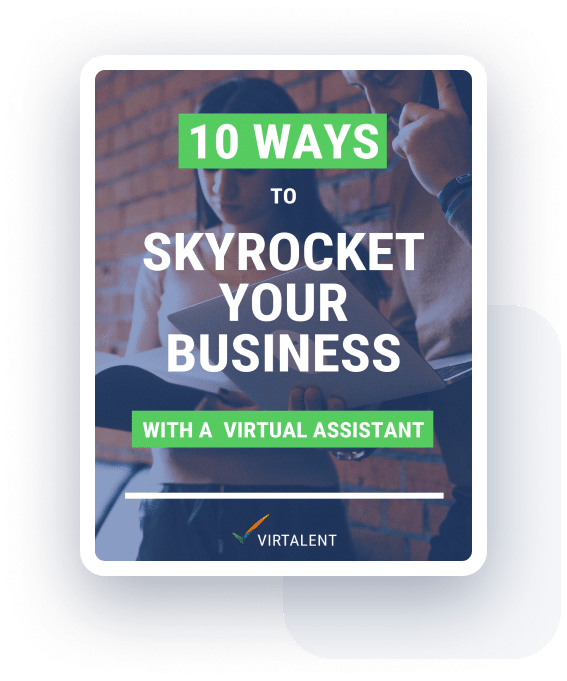As a busy founder, dealing with objections can be one of the most challenging parts of the job. Whether it's client hesitation, concerns from your team, or supplier resistance, these situations can drain your time and energy. Finding the right balance between addressing objections and keeping the business moving forward can feel overwhelming when resources are limited.
But objections don't have to hold you back. They can be valuable growth opportunities. Applying the right strategies can turn objections into valuable learning experiences that will help your business thrive.
Types of Objections Founders Face
Objections come from all directions, and it's important to tailor your approach to the person raising the concern. Quickly identifying the type of objection and addressing it head-on will help you not only solve the issue but also builds trust and strengthens your leadership.
Sales and Client Objections
Sales objections are among the most common and typically fall into three categories:
- Cost
- Timing & readiness
- Fear of making a poor decision
If you're handling the sales process, chances are you've already qualified your potential clients. However, these common objections often stem from fear. Your goal here is to offer reassurance through data, testimonials, or trial periods to help ease their concerns and build their confidence in making the right choice.
Staff and Team Objections
If you have an internal team, changes can sometimes lead to resistance. These concerns often arise from uncertainties and usually fall into three categories:
- Workload and responsibilities
- Changes in the company's direction
- Company stability and job security
Creating a positive company culture and communicating openly with your team can help alleviate these fears. Regular check-ins and transparency go a long way in keeping everyone on the same page.
Supplier and Partnership Objections
Negotiations with suppliers and partners can also bring objections. Common challenges include:
- Pricing disagreements
- Delays of delivery
- Contractual flags
The goal here is to find a solution that benefits both parties. While this can take time and sometimes feels uncertain, using market data and building strong relationships can help create a win-win situation.
Strategies for Overcoming Common Objections in Business
Objections can arise in many situations, but the goal is always to address them quickly and thoughtfully. While each scenario may require a slightly different approach, there are a few strategies that work well for almost any objection.
1. Active Listening and Empathy
Active listening and empathy are crucial skills in overcoming objections. Objections often stem from deeper concerns that aren't immediately obvious. You can build trust and stronger connections by truly listening and showing that you understand the other person's perspective.
Here are three techniques to use:
- Mirroring – Reflect on what the other person is saying to confirm you've understood their key points.
- Pausing—Take a moment before responding. This helps avoid knee-jerk reactions and gives you time to process the information. Research from Gong found that sales reps who pause before answering were typically able to close more sales as a result.
- Ask clarification questions—Questions such as "Can you tell me more about what concerns you?" help you gain a clearer understanding of the objection.
2. Using Data and Evidence
Data is a powerful tool for overcoming objections, but it should be used to support your argument, not as a defence.
Testimonials, case studies, and performance metrics can effectively address concerns. For clients, show how similar businesses have benefited from your services. For team members, use performance data to highlight improvements. When negotiating with suppliers, bring up relevant market data or successful partnerships.
Each of these adds credibility to your argument while reassuring the other party that it's supported by solid evidence.
3. Negotiation Techniques
Each of these adds credibility to your argument while reassuring the other party that it's supported by solid evidence. A study conducted by Web Strategies found that 64% of sales will proceed if an objection is handled with care.
While many books, videos and podcasts are dedicated to the art of negotiation, some very simple approaches can be used in most situations. Here are a few examples:
Offer a Win-Win Compromise
Finding a solution that works for both sides is one of the most powerful ways to address objections."
For clients, this could mean offering a tiered service package if they are worried about cost or a flexible payment option. Another could be offering a money-back guarantee or additional "perks" to add value.
For team members, it might involve providing additional support for a challenging project or adjusting working hours. You could also redistribute workload but request more ownership of a particular project or element of their role.
You might negotiate longer payment terms or a staggered delivery time with suppliers. Even the promise of exclusivity for a specific period can sweeten the deal.
"Yes, And" Approach
This technique is borrowed from improvisational theatre, where the answer must always be yes. It ensures you acknowledge the other person's concerns while offering your perspective.
For example: "Yes, I understand that the cost is higher than expected, and that's because we include ongoing support, which has helped similar businesses see a 20% increase in sales."
This approach keeps the conversation positive and forward-focused, showing that you value their input while reinforcing your offering.
Asking For Their Preferred Solution
This is a common sales technique but can work in many different scenarios. If someone isn't deciding on receiving all the information, asking the right questions can help reveal any hidden objections.
You could ask, "Is there anything stopping you from moving forward today?" If they mention cost, you can acknowledge their concern and follow up with, "If cost wasn't an issue, would you feel comfortable moving forward?" This helps you address every area of concern and makes it more difficult for them to say no without applying undue pressure.
By guiding the conversation, you can address the other person's needs while moving toward a resolution.
4. Addressing Objections with Transparency
Ignoring or dismissing objections without a clear explanation can lead to mistrust, which may result in the loss of clients or employees.
Even if handling the objection is difficult, and you are not keen on giving the true answer, attempt to present it as honestly and carefully as possible following steps like these:
- Acknowledge the objection
- Be honest about any issues or limitations
- Make sure to provide some context of the situation
- Offer a solution (and maybe some kind of added benefit or "goodwill gesture" without being asked to)
- Follow through and confirm that both sides are happy with the outcome.
Taking ownership of the problem and not trying to hoodwink the other party, even going so far as offering something for their troubles, can often diffuse many situations very quickly. It shows that you value the person's feelings and that you are doing what you can to rectify the situation without trying to mislead them. These types of actions will build trust in the long run as well.
5. Framing All Objections As Opportunities
When someone raises an objection with you, they are usually sharing information that will solve the problem easily. For example, if a customer says, "The price is too high," this presents an opportunity to either show value or find a workable solution, such as tiered options to fit their budget.
Objections don't just offer opportunities for your customers—they offer opportunities for you. If you frequently get this type of objection, it can highlight a chance to improve and enhance your communication skills. Every time someone, be it a customer or a staff member, has feedback like this, take it as constructive rather than negative by following this framework.
- Encourage open dialogue with others
- Ask probing questions for more information
- Identify any ongoing patterns
- Take each objection as a chance to improve
Managing Objections Leads to Growth
Objections can feel challenging, especially when deeply invested in your business. However, by being transparent, empathetic, and proactive, you can turn these situations into opportunities for growth. Whether you're handling objections from clients, team members, or suppliers, thoughtful management can lead to stronger relationships and better outcomes for everyone involved.
If dealing with objections is taking up too much of your time, a Virtual Assistant can be a valuable resource to help you manage the flow of these conversations, giving you the space to focus on the bigger picture.







